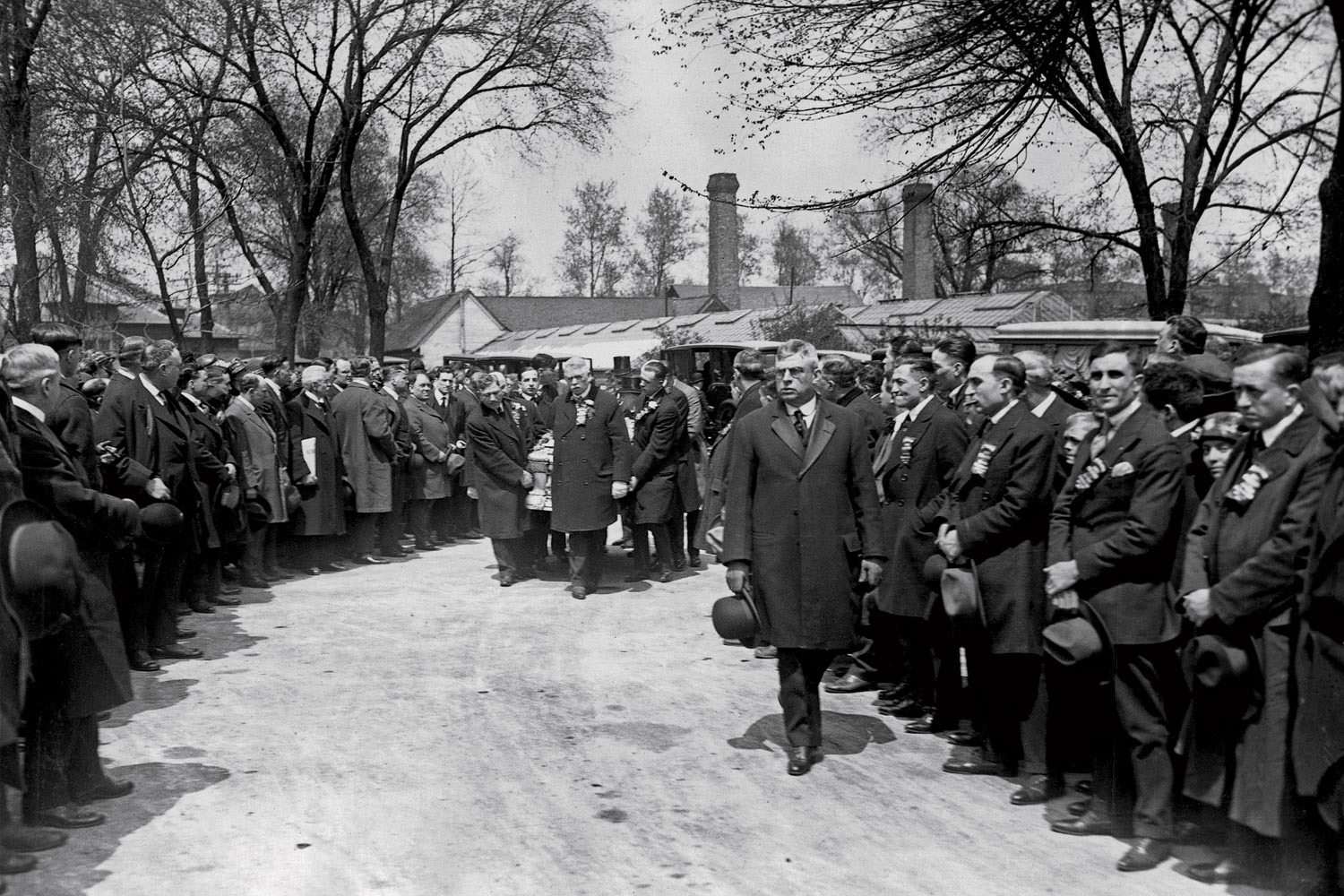1 Cicero, not Chicago, was dubbed the “wettest spot in the United States.” Agents discovered 20 separate large-scale stills in a single series of raids, reports John J. Binder in Al Capone’s Beer Wars: A Complete History of Organized Crime in Chicago During Prohibition (June 6, Prometheus Books). Crackdowns had forced the alcohol underworld into the western suburb, where the Torrio-Capone gang roughed up voters to sway the 1924 election and keep certain friendly politicians in office, thus securing itself free run of the town.
2 A sign of how cozy gangsters were with elected officials: After Capone’s mentor, James “Big Jim” Colosimo, was killed in 1920, his pallbearers included eight aldermen, three judges, and a U.S. congressman (shown above).
3 Gangsters weren’t all to blame for the murderous era. Of the 729 homicides in Cook County between 1919 and 1933 classified as “gang-style” killings by the Chicago Crime Commission, Binder found that 43 percent were actually not related to organized crime but to personal feuds and other private matters. A 1932 newspaper ad for a local textile shop read: “Bullet Holes Rewoven Perfectly in Damaged Clothes—Low Price.”
4 Chicago’s 6,000 illicit slot machines temporarily disappeared in the late 1920s after a vigorous state’s attorney was elected, but gambling as a whole never really died down. By 1930, there were roughly 10,000 illegal locations, from barbershops to newsstands, to wager on horses or place other bets. You could find a spot to lose money about as often as you can find a bus stop today.
5 Capone’s gang was pulling in “tribute” payments—a cut of profits for protection—from two-thirds of the city’s labor unions, but the milk wagon drivers refused to be controlled, even after Capone affiliates kidnapped their union’s president for a $50,000 ransom. Instead, they bombproofed the union office and bought a bulletproof car. Plan B: Capone opened a rival dairy, staffed trucks with his own men, and sold milk two cents cheaper.



